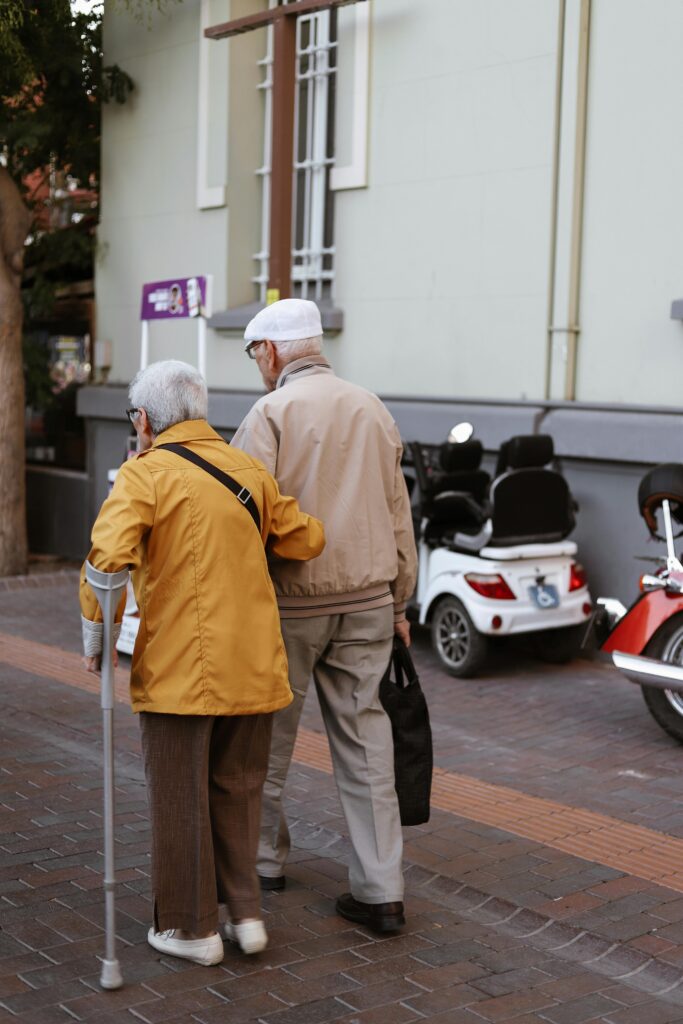Maintaining mobility is crucial for independence and quality of life. Whether recovering from an injury, managing a chronic condition, or simply dealing with the effects of ageing, the right walking aid can make all the difference. At Safety and Mobility, we understand the importance of selecting the best support to meet your unique needs. In this guide, we’ll explore the benefits of canes, crutches, and walkers, and highlight some of the top products from our range. Safety and Mobility always recommend speaking with your healthcare professional prior to purchasing a walking aid to ensure it is the right product for your needs.
Canes
Canes, sometimes known as walking sticks are one of the most common walking aids, providing extra support and balance for individuals with mild mobility issues. They are lightweight, easy to use, and come in a variety of styles to suit different needs and preferences.
Benefits:
- Improved Balance: Canes offer additional stability, helping to prevent falls and maintain balance.
- Weight Distribution: They help redistribute weight away from an injured or weak leg.
- Versatility: Canes are highly portable and can be used in various settings, from indoors to outdoors.
Canes are ideal for individuals with minor balance issues, arthritis, or recovering from a leg injury. For example, Quad Sticks provide enhanced stability with their four-point base, making them perfect for those needing extra support.
Crutches
Crutches are typically used for short-term mobility support, especially after an injury or surgery. They come in different types, including underarm (axillary) crutches and forearm (Lofstrand) crutches.
Benefits:
- Weight Bearing Relief: Crutches allow you to keep weight off an injured leg, aiding in recovery.
- Adjustability: Many crutches are height-adjustable, ensuring a proper fit for comfort and effectiveness.
- Increased Mobility: They offer more mobility than a wheelchair, allowing for a more active recovery.
Crutches are often suitable for individuals recovering from leg injuries, surgery, or conditions that require non-weight bearing or partial weight-bearing mobility over shorter distances. A popular crutch type are the Coopers Elbow Cruches with Cumfy Handle, which offer comfort and durability, featuring ergonomic handles and secure arm cuffs for better control.
Walkers
Walkers provide substantial support for individuals with significant mobility challenges. They come in various designs, including standard walkers, wheeled walkers, and rollators.
Benefits:
- Maximum Support: Walkers offer the highest level of stability, making them ideal for those with severe balance issues.
- Customizable: Many walkers come with adjustable heights and additional features like seats and storage pouches.
- Enhanced Mobility: Wheeled walkers and rollators allow for smoother movement, making it easier to navigate various terrains.
Walkers are best for individuals with severe mobility issues, those recovering from major surgery, or elderly individuals who need extra support for everyday activities. The Nomad Rollator is an example of a rollator that features four wheels for easy maneuverability, a built-in seat for rest breaks, and a storage compartment for convenience.
Choosing the Right Aid
Selecting the right walking aid depends on your specific needs and physical condition. It’s essential to consult with a healthcare professional to determine the best option for your situation. At Safety and Mobility, we’re committed to providing high-quality products that enhance your independence and quality of life. Explore our full range of walking aids and find the perfect support for your mobility needs.
Visit us at Safety and Mobility to learn more about our products and how they can help you stay active and independent.
Photo by hissetmehurriyeti : https://www.pexels.com/photo/elderly-couple-walking-together-14866317/


